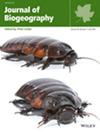Climate change poses a challenge to the Azores' biodiversity, with consequences that remain unexplored. To shed light on the potential impacts of climate change, we have developed a large ensemble of species distribution models (SDMs) for species found in the coastal marine environments and examined their spatiotemporal turnover and stability.
The Azorean archipelago.
Coastal marine species (mammals, fish, turtles, seabirds, kelp forest and corals).
SDMs were fitted a large ensemble comprising 10 machine learning algorithms and a fivefold cross-validation resampling procedure, thus yielding a maximum number of 50 models fitted per species. These models were then utilised for projecting species distribution under different future scenarios. The projected distributions of the species were employed to assess changes in the stability of their ranges throughout the entire modelled period (2030–2100) and in their community compositions by examining changes in alpha diversity and beta diversity over 10-year periods.
We show that under our model assumptions over 12% of the modelled units could lose suitable climate by the end of the century, with this number increasing up to 25% under a high carbon emissions scenario. Climate change refugia, which are areas of long-term species range stability, are expected to be mainly located in the coastal areas in the northernmost part of the archipelago. A substantial loss of suitable climate is anticipated for mammals and birds, which is likely to trigger a major loss of species on the islands of Santa Maria, São Miguel, Pico and Faial. For fish, the loss of suitable climates is less pronounced. However, climate change is expected to cause a major reshuffling of the pelagic fish assemblage, with important consequences for local fisheries on each island.
Our models provide insights into how climate change may alter the distribution of Azorean marine coastal species, offering important guidance for conservation and management efforts in these important North Atlantic ecosystems.


